|
Originally posted Friday, 05 August 2016 15:41 There are so many things you have probably learned about owls over the years: Owls are nocturnal. Owls fly silently. Owls can turn their heads 270 degrees. Owls mate for life. Owls have asymmetrical ears. None of these statements is true for all owl species, but it is very difficult to find out the details about each statement. That's why our staff likes to go right to the source when we can't find original literature. That means we use owls that have been found dead for various reasons so that we can learn more about owls first-hand. (N.B. We have state and federal permits to allow us to pick up and use dead specimens.) In June we had a staff development day in which we dissected four owl species: Great Horned Owl, Barred Owl, Eastern Screech-Owl, and Long-eared Owl. One of the things we specifically wanted to compare between the species was their ears. We knew from skulls in our collection that Northern Saw-whet Owls have one ear higher than the other. Their ears are so asymmetrical that the skull is actually asymmetrical. But our other skulls (Barn Owl, Great Horned Owl, and Great Gray Owl) didn't show the same obvious asymmetry. Before we cut open our owl specimens we investigated the ears. How big were they? Could we see that one ear was noticeably different than the other ear? We saw extreme differences. 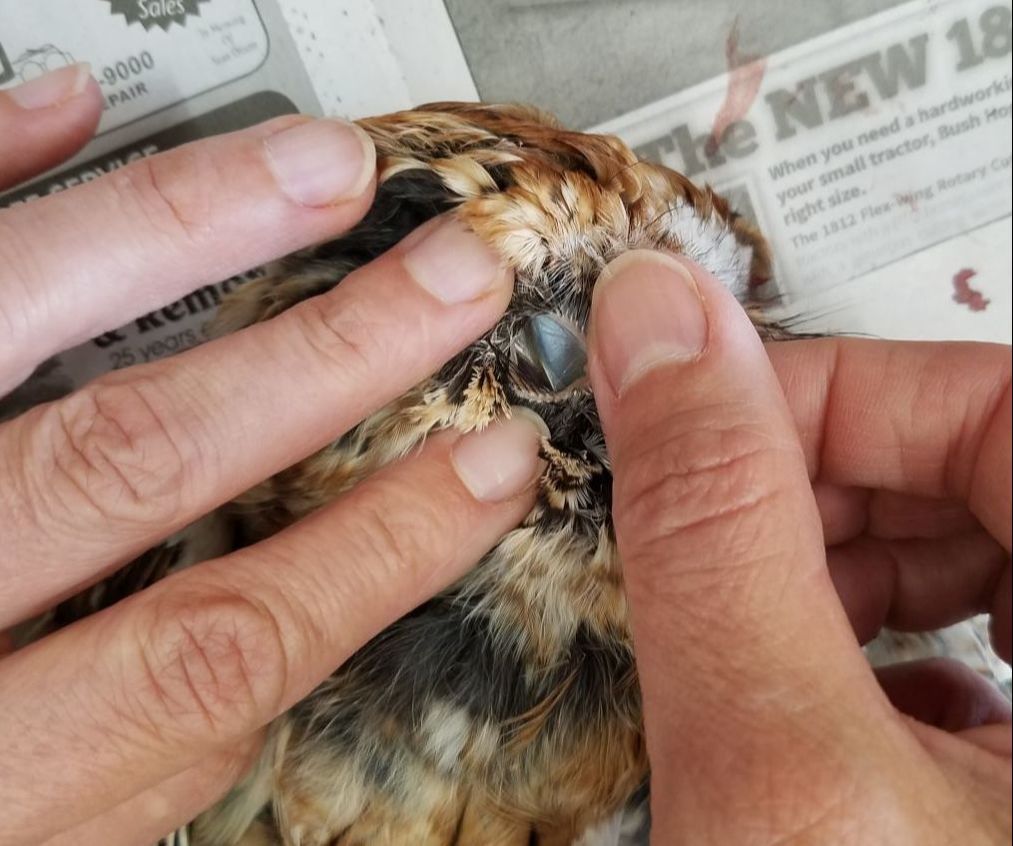 The Eastern Screech-Owl's ear is large compared to many bird ears, but not compared to other owls. The bluish thing visible inside the ear is actually the owl's eyeball. Yes, the eyeball. Owls' eyes are gigantic in relation to their skulls, with their brains being about the size of one of their eyes. This owl did not seem to have one ear higher than the other. 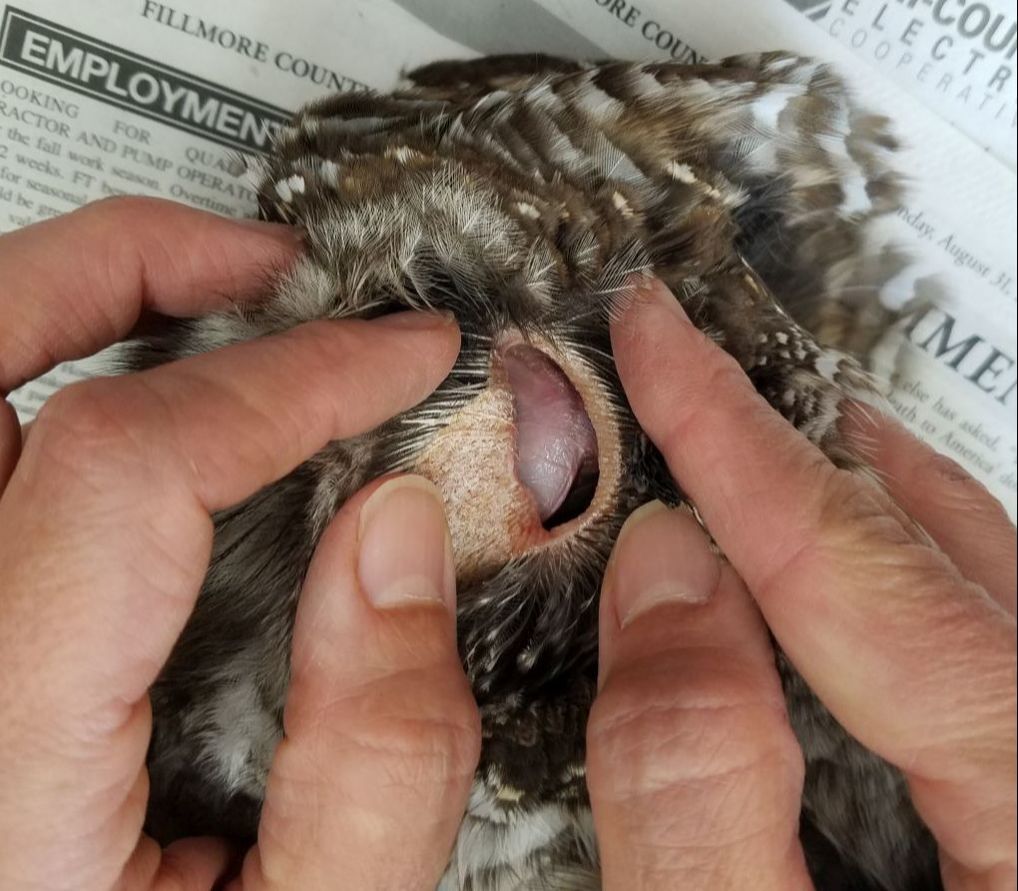 Barred Owl ears take up a good part of the side of their face. Unlike the Great Horned Owl and Eastern Screech-Owl, the Barred Owl has a flap of skin that covers their ear opening. Great for blocking out sounds you don't want to hear, and perhaps to aid in funneling sound into their ears. They use hearing more in their hunting than Great Horneds and Screech-Owls, and seemed to have some asymmetry in their ear openings. 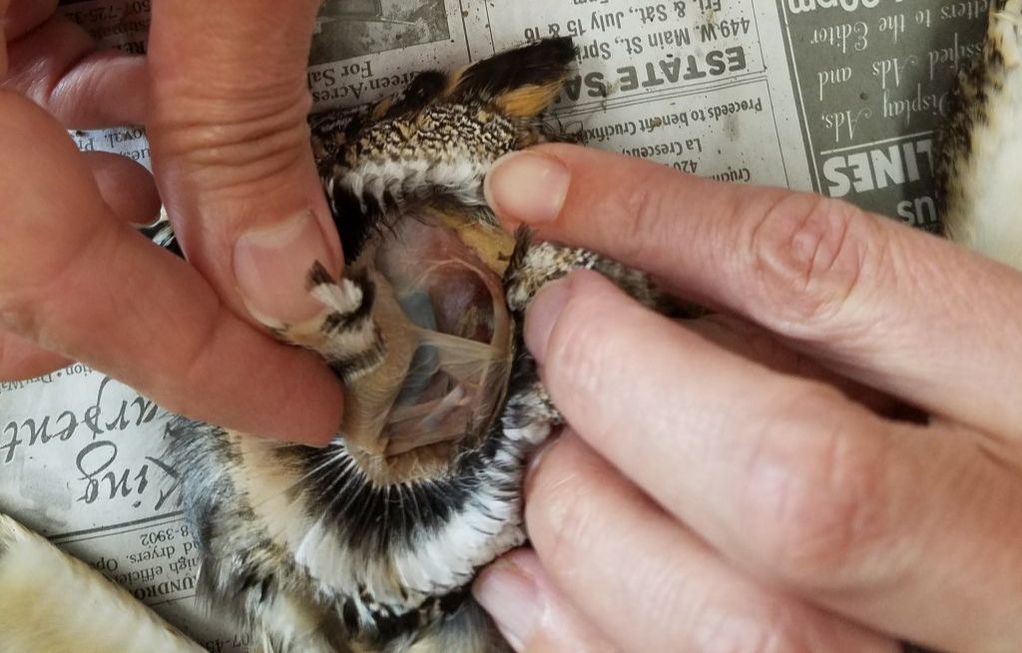 The Long-eared Owl ears were EXTREME compared to the other owls. The ear slit in the side of its head starts down near its jaw and goes almost to the top of its head, on both sides. There doesn't seem to be much skin that holds their faces together! The blue in the photo is the eyeball, and the rest shows the skull and how the ear opening inserts into the skull. The ear openings are CLEARLY different from each other, with one inserting lower into the skull and the other higher. The also have a long, thin flap of skin, edged with feathers, that can cover the entire opening. We saved the skulls and eye bones and are currently cleaning them to add to our collection. (Yes, bird eyes have bones in them, and they are large in owls.)
We also looked at oil glands, stomach contents, feather attachments, range of head movement possible, and more. Some of it is a bit gory, so we'll spare you the images. But if you're interested in this kind of thing, check to see when we plan to hold our next Owlology 401 class, where you get to see an owl dissection first hand in a small group setting. As we get specimens of other species we'll take more pictures to compare, but as you can see, owl ears are not all created equal!
2 Comments
2/4/2018 11:11:03 am
I'm confused that a GHO is considered asymmetrical and yet you found them to have ear openings about the same position on each side? Is that rare or maybe they should be changed to symmetrical in the books now?
Reply
WHY JAMES
12/6/2023 10:49:38 am
ewueeeeeeeeeeeeeee but thank for help work
Reply
Leave a Reply. |
AuthorKarla Bloem is the Executive Director of the International Owl Center. ArchivesCategories
All
|
|
Links - Privacy policy
International Owl Center
126 E Cedar St. Houston, MN 55943 (507) 896-OWLS (6957) [email protected] 501(c)(3) organization EIN #45-5503365 |
|
|
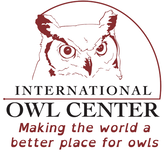
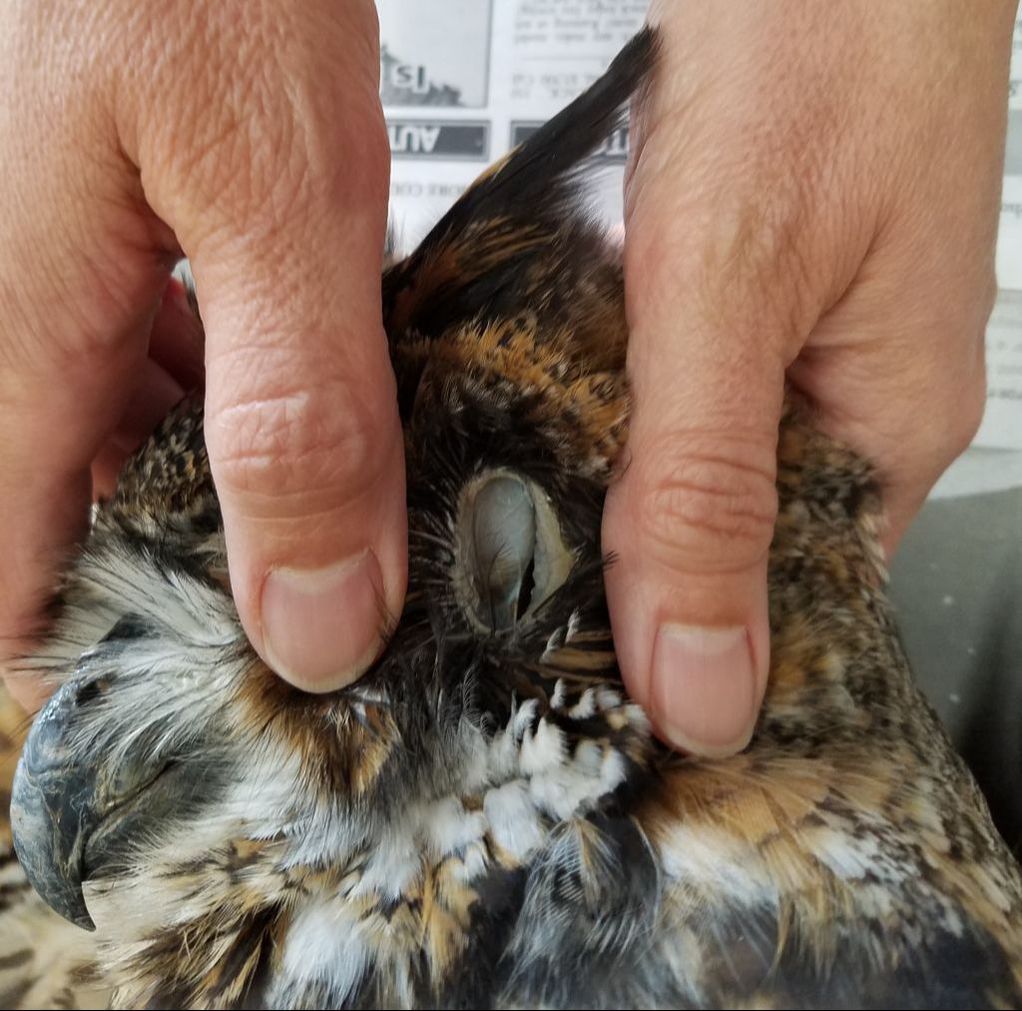
 RSS Feed
RSS Feed




